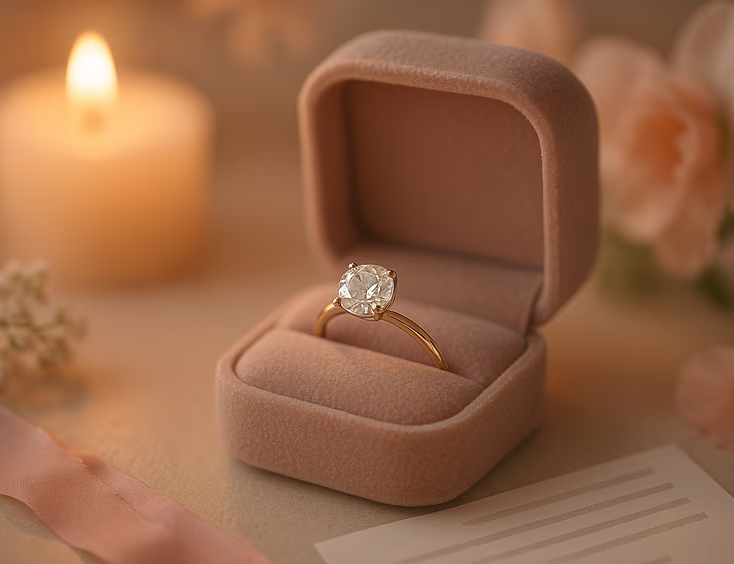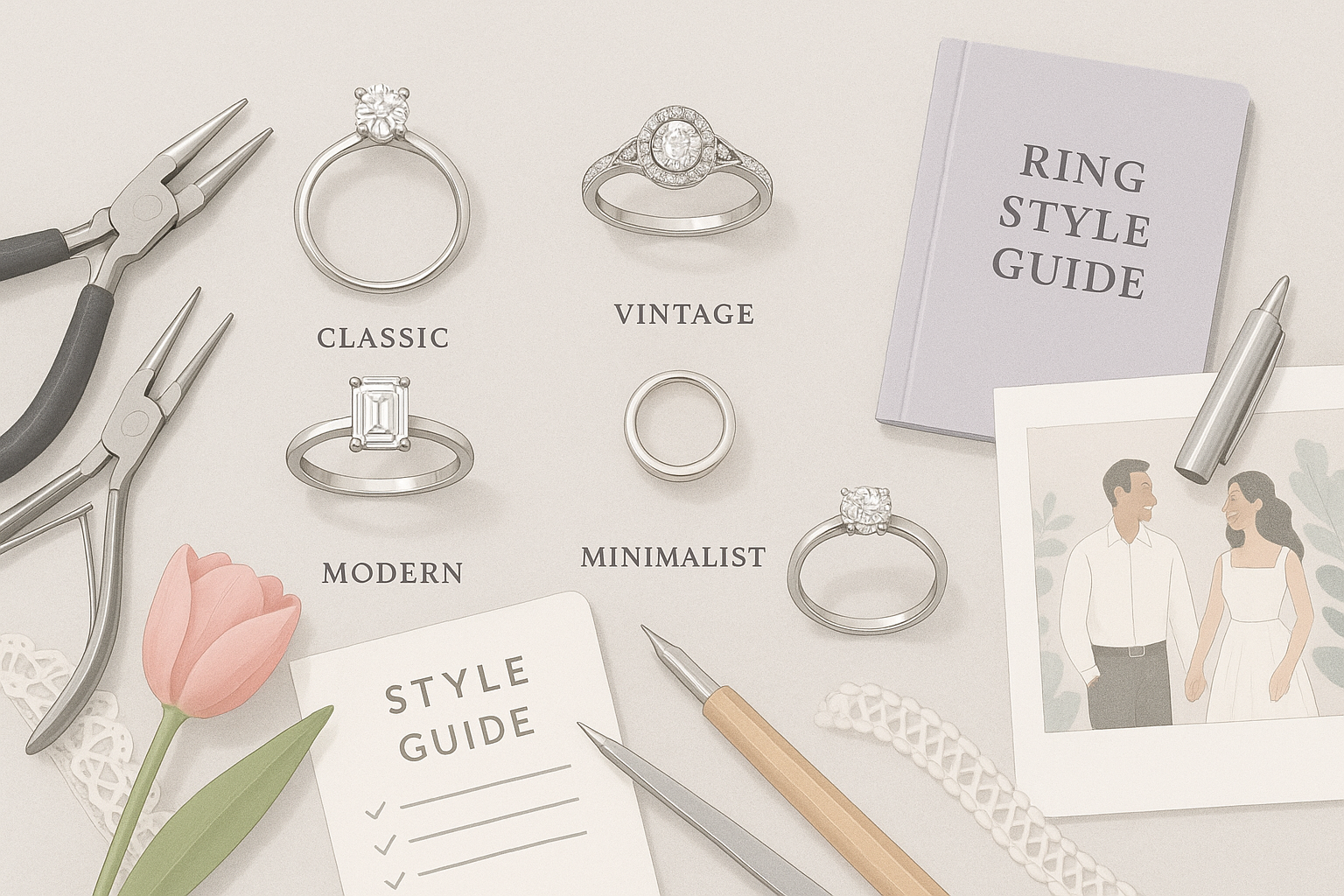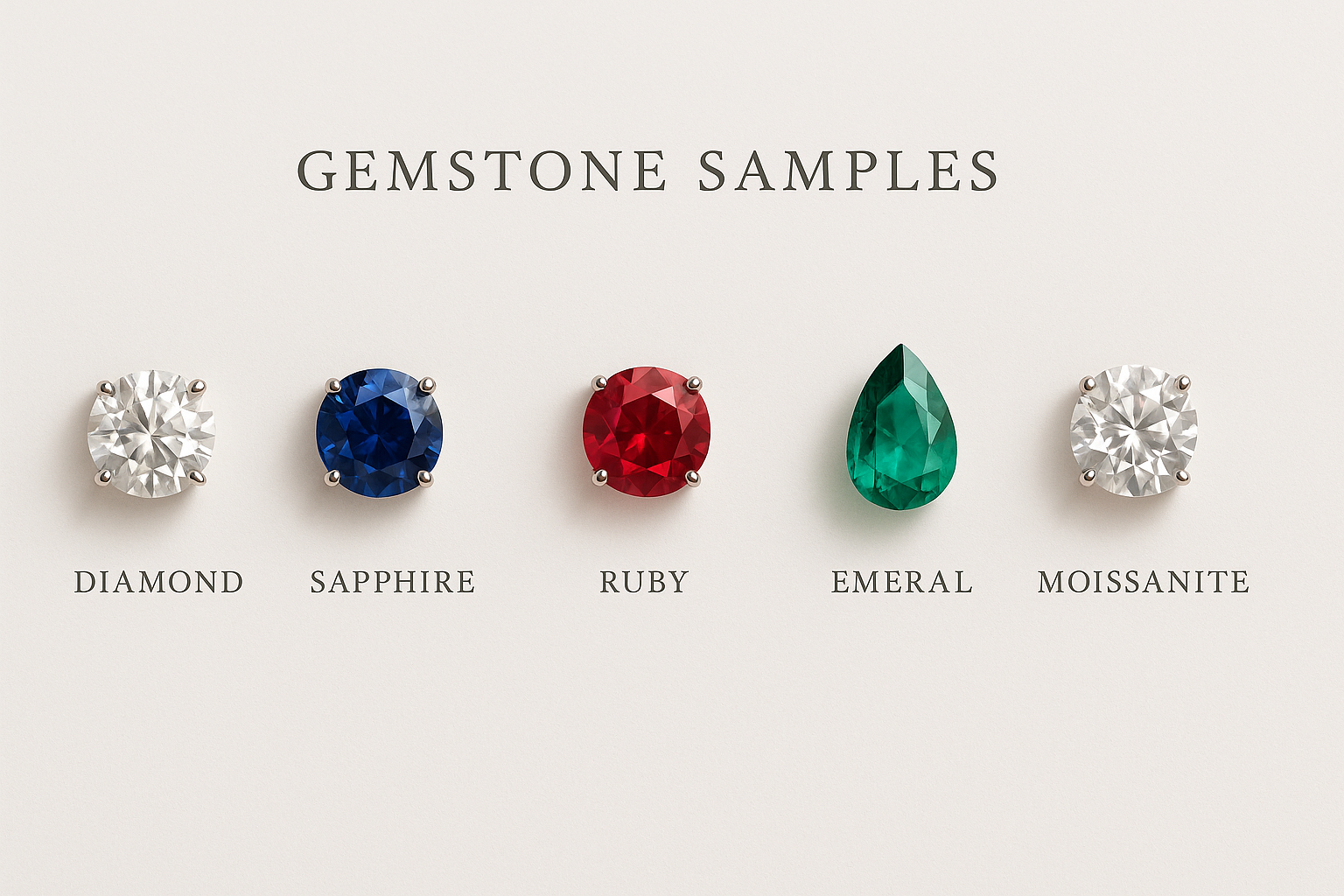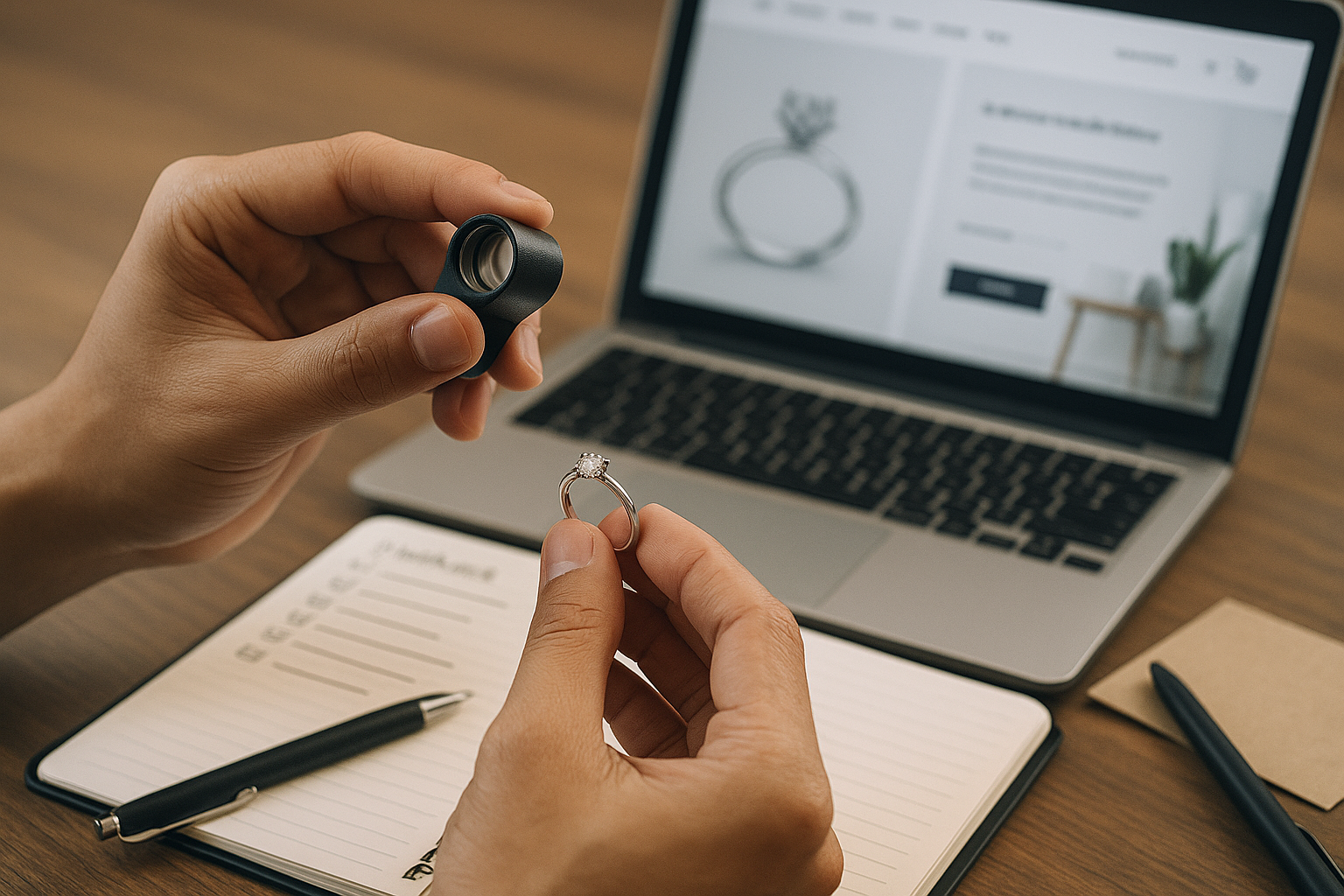
How to Choose the Perfect Engagement Ring in the Philippines: An Expert Guide

If you're searching for the best engagement ring in the Philippines, you're in the right place. This comprehensive guide will walk you through every step of selecting the ideal engagement ring for your partner—from determining their ring size to choosing the right metal, gemstone, shape, and setting.
We'll also discuss how to customize a ring for a personal touch and offer practical tips for making the process smooth and enjoyable. Ready to make your partner say “yes”? Read on!
Table of Contents
The Importance of Choosing the Right Engagement Ring for Your Partner
How to Choose the Right Engagement Ring for Your Partner's Personality and Style
How to Find Out Your Girlfriend's Ring Size (Secretly!)
Factors to Consider When Shopping for an Engagement Ring
Different Types of Gemstones
- Natural Diamond
- Natural Diamond with GIA Certificate
- Lab-Grown Diamond
- Moissanite
- Premium Signity
- Emerald
- Ruby
- Sapphire
Different Karats of Gold
Practical Buying Tips for Engagement Rings
How to Care for Your Engagement Ring
Customization Tips: Making Your Ring Unique
Frequently Asked Questions (FAQs)
Final Thoughts
The Importance of Choosing the Right Engagement Ring for Your Partner
An engagement ring is much more than a piece of jewelry. It represents your lifelong commitment, symbolizes your unique relationship, and showcases both your taste and style. This is a gift your partner will cherish and wear for years—perhaps even for the rest of their life.
Because of its significance, choosing the right engagement ring is crucial. You want a ring that's not only stunning and durable but also a true reflection of your partner's personality. When your partner first sees the ring, you'll want to see their eyes light up with excitement.
But how do you pick a ring your partner will love—without ruining the surprise? How do you balance your budget and your dreams? And how do you ensure your choice stands the test of time?
This guide will answer all these questions and more. Here's how to choose an engagement ring that your partner will adore.

How to Choose the Right Engagement Ring for Your Partner's Personality and Style
Selecting an engagement ring that fits your partner's personality and style can feel intimidating, but it's also an incredibly rewarding process. Here's how to make the right choice:
- Set a Budget and Stick to It
Engagement rings come in a wide range of prices, depending on factors such as metal type, gemstone, and design complexity. Set a realistic budget before you start shopping, and focus on rings within that range. Remember: a thoughtful, high-quality ring can be found at any budget! - Consider Your Partner's Lifestyle and Preferences
Observe the jewelry your partner already wears. Do they prefer gold or silver? Bold or delicate pieces? Classic or modern designs? You can also ask close friends or family for advice, or look at your partner's Pinterest boards and wishlists for inspiration. - Choose a Diamond Shape and Setting That Matches Their Personality
The shape of the stone—round, princess, oval, pear, marquise, cushion, etc.—says a lot about style. The setting (how the stone is mounted) also impacts the ring's look and practicality. - Personalize the Ring
Make the ring uniquely theirs by adding special touches. Consider engraving a meaningful date or message inside the band, or adding accent stones that have significance. - Get the Right Ring Size
The ring should fit comfortably and securely. Aim to find the most accurate measurement possible to avoid resizing after the proposal.
How to Find Out Your Girlfriend's Ring Size (Secretly!)
Secretly finding your partner's ring size can be a challenge, but with a bit of creativity, it's very possible. Here are tried-and-tested strategies:
- Borrow a Ring: Sneak a ring she already wears on her left ring finger (even just for a day!) and bring it to a jeweler or compare it to an online ring size chart. Just make sure to return it before she notices!
- String or Paper Trick: Gently wrap a piece of string, paper, or tape around her finger while she's asleep, then mark where it overlaps. Measure this length and consult a ring size chart.
- Ask Trusted Friends or Family: Sometimes her close friends or family members already know, or they can subtly find out for you.
- Check Her Jewelry Box: Look for notes, receipts, or ring labels indicating her size. Compare her existing rings to your intended finger.
- “Help Me Shop” Ruse: Pretend you're buying a ring for your own sister or mother and ask your partner to try it on “for sizing.” Observe which ring size fits her.
- Adjustable Ring Gift: Gift her a cheap adjustable ring and see how she sizes it—then measure it later!
Factors to Consider When Shopping for an Engagement Ring
With so many options available, buying an engagement ring can feel overwhelming. Here are the essential factors to help guide your decision:
- Type of Gemstone: The centerpiece of the ring is often the gemstone, which is typically the most visible and valuable part.
- Metal Type and Purity: This affects the ring's durability, appearance, and value.
- Ring Setting and Style: From classic solitaires to intricate vintage designs, the setting impacts the overall look and feel of the ring.
- Size and Shape: Comfort and aesthetics both matter. The size and shape of the ring should suit your partner's taste and finger.
- Quality and Certification: Particularly important when choosing diamonds or other precious stones. Certification assures you of the stone's authenticity and quality.
- Price and Value: Balancing what you want with what fits your budget is key for a satisfying purchase.

Different Types of Gemstones
The gemstone is the highlight of the engagement ring. Here's a closer look at the most popular options:
Natural Diamond
Natural diamonds are formed under high pressure and temperature deep within the earth. They're valued for their exceptional hardness (10 on the Mohs scale), brilliance, and symbolism of enduring love.
When selecting a natural diamond, consider:
- Size and Carat Weight: Bigger diamonds generally cost more, but balance size with other quality factors.
- Shape and Cut: The cut impacts how much the diamond sparkles, while the shape (round, princess, cushion, oval, etc.) reflects personal style.
- Color and Clarity: Less color and fewer inclusions typically mean a higher value.
- Certification: Always check for grading from reputable organizations.
Popular diamond shapes:
- Round: The most classic and brilliant.
- Princess: Modern, with a square shape.
- Cushion: Soft, rounded corners for a romantic feel.
- Oval: Elongated and elegant.
- Pear: Teardrop-shaped and unique.
- Emerald: Rectangular, with step cuts for a sophisticated look.
- Heart: The ultimate symbol of romance.
Natural Diamond with GIA Certificate
A GIA-certified diamond has been graded by the Gemological Institute of America, the most respected name in diamond evaluation. Each certificate provides a comprehensive analysis of the diamond's cut, color, clarity, and carat weight, as well as a unique report number for added security.
Benefits of GIA certification:
- Confidence in quality and authenticity
- Transparent and reliable grading standards
- Ease of resale or insurance
Lab-Grown Diamond
Lab-grown diamonds are created in controlled environments using advanced technology. Chemically and physically identical to natural diamonds, they offer a more affordable and ethical alternative.
Advantages of lab-grown diamonds:
- Lower price compared to natural diamonds
- Eco-friendly and conflict-free origins
- Wide availability in various shapes and sizes
Moissanite
Moissanite is a gemstone created in laboratories to closely resemble diamonds. It scores 9.25 on the Mohs scale, making it quite durable. Known for its dazzling fire and brilliance, moissanite is a cost-effective alternative to diamonds.
Premium Signity
Premium Signity stones are high-grade cubic zirconia. They're engineered for maximum sparkle and are popular for budget-friendly rings. Unlike lower-quality imitations, premium Signity stones resist clouding and maintain their brilliance over time.
Emerald
Emeralds, prized for their rich green color, symbolize love, harmony, and growth. With a hardness of 7.5 to 8, they are fairly durable but can have inclusions or surface cracks. Emeralds require gentle care but provide a unique, luxurious look.
Ruby
Rubies represent passion and success with their vibrant red hue. Ranking 9 on the Mohs scale, they are very durable. Natural rubies are rare, which can make them expensive. Inclusions are common and often accepted as part of their beauty.
Sapphire
Sapphires, often blue, signify wisdom and loyalty. Their durability (9 on the Mohs scale) makes them ideal for daily wear. While they have a deep, rich color, some sapphires may fade over time if exposed to strong sunlight.
Different Karats of Gold
Gold karats indicate the purity of gold in the alloy, which affects the appearance, durability, and price of your ring. Here's a quick guide:
- 24k Gold: Pure gold (99.9%). Rich in color, but soft and prone to scratching.
- 22k Gold: 91.6% gold. Still quite soft but more durable than 24k; retains a vivid yellow hue.
- 18k Gold: 75% gold, with a good balance of purity and durability. Popular for engagement rings.
- 14k Gold: 58.5% gold. Strong, affordable, and widely used for everyday jewelry.
- 10k Gold: 41.7% gold. The hardest and most budget-friendly, but has a paler appearance and may not suit those with metal sensitivities.

Practical Buying Tips for Engagement Rings
Choosing where and how to buy an engagement ring can make all the difference in your experience. Here are some expert tips to guide you:
- Compare Retailers: Explore both physical stores and reputable online jewelers. Read reviews, compare prices, and check return or exchange policies before committing.
- Ask for Certifications: If you're purchasing a diamond or other precious gemstone, always ask for a certificate of authenticity from a recognized authority (like GIA, IGI, etc.).
- Understand the Warranty: Look for warranties or guarantees that cover maintenance, resizing, or repair.
- Inspect Before Purchase: Examine the ring for flaws, loose stones, or manufacturing defects. If shopping online, make sure the seller offers clear, detailed photos and a solid return policy.
- Request Documentation: Keep all receipts, certificates, and appraisals in a safe place for insurance and resale purposes.
- Plan Ahead: Custom rings and certain gemstones may require extra time for sourcing and crafting. Start your shopping journey early to avoid last-minute stress.
How to Care for Your Engagement Ring
Proper care helps your ring maintain its brilliance and structure for years to come. Here are some practical care tips:
- Regular Cleaning: Clean your ring gently using mild soap, warm water, and a soft toothbrush. Avoid harsh chemicals, which can damage metals and stones.
- Professional Maintenance: Bring your ring to a trusted jeweler for annual inspections. They can check for loose stones, worn prongs, and general wear.
- Remove During Activities: Take off your ring during heavy exercise, swimming, gardening, or using strong cleaning products.
- Safe Storage: Store your ring in a soft pouch or separate compartment to prevent scratches and tangling with other jewelry.
- Insure Your Ring: Consider insuring your engagement ring to protect against loss, theft, or accidental damage.
Customization Tips: Making Your Ring Unique
Adding personal touches can make your engagement ring even more meaningful. Here are a few customization ideas:
- Engraving: Personalize the inside of the band with your initials, a special date, or a short meaningful phrase.
- Accent Stones: Add small side stones (such as birthstones or favorite gems) for extra sparkle and significance.
- Unique Settings: Choose a setting style that reflects your partner's personality, from vintage filigree to modern minimalist.
- Custom Designs: Work with a jeweler to design a ring from scratch, incorporating elements that have special meaning to your relationship.
- Alternative Gemstones: Select a non-traditional center stone, such as sapphire, ruby, or emerald, for a unique look.
Frequently Asked Questions (FAQs)
Q: How much should I spend on an engagement ring?
A: There is no fixed rule—spend what feels comfortable for your financial situation. Meaning and thoughtfulness matter more than the price tag.
Q: Can engagement rings be resized?
A: Most rings can be resized up or down, but some designs (especially with intricate settings or many stones) may have limitations. Check with your jeweler before purchasing.
Q: What's the difference between a natural and lab-grown diamond?
A: Lab-grown diamonds have the same chemical and physical properties as natural diamonds but are created in a controlled environment, often making them more affordable and ethical.
Q: Is it safe to buy an engagement ring online?
A: Yes, as long as you buy from a reputable retailer that provides clear certifications, detailed photos, secure payment methods, and a fair return policy.
Q: How do I secretly find my partner's ring size?
A: Try borrowing a ring they wear on their ring finger, use a string or paper measurement while they sleep, ask friends or family, or take note during jewelry shopping together.
Final Thoughts
Selecting an engagement ring is a memorable milestone. By doing your research, considering your partner's preferences, and focusing on what matters most to both of you, you'll be able to find a ring that not only sparkles but also tells your unique love story.
Good luck on your engagement ring journey!


